






 Alan Jessop Let the Evidence Speak Using Bayesian Thinking in Law, Medicine, Ecology and Other Areas Let the Evidence Speak Alan Jessop Let the Evidence Speak Using Bayesian Thinking in Law, Medicine, Ecology and Other Areas Alan Jessop Durham University Business School Durham University Durham, United Kingdom ISBN 978-3-319-71391-5 ISBN 978-3-319-71392-2 (eBook) https://doi.org/10.1007/978-3-319-71392-2 Library of Congress Control Number: 2017960423 Springer International Publishing AG, part of Springer Nature 2018 This work is subject to copyright. All rights are reserved by the Publisher, whether the whole or part of the material is concerned, specifically the rights of translation, reprinting, reuse of illustrations, recitation, broadcasting, reproduction on microfilms or in any other physical way, and transmission or information storage and retrieval, electronic adaptation, computer software, or by similar or dissimilar methodology now known or hereafter developed. The use of general descriptive names, registered names, trademarks, service marks, etc. in this publication does not imply, even in the absence of a specific statement, that such names are exempt from the relevant protective laws and regulations and therefore free for general use. The publisher, the authors and the editors are safe to assume that the advice and information in this book are believed to be true and accurate at the date of publication. Neither the publisher nor the authors or the editors give a warranty, express or implied, with respect to the material contained herein or for any errors or omissions that may have been made.
Alan Jessop Let the Evidence Speak Using Bayesian Thinking in Law, Medicine, Ecology and Other Areas Let the Evidence Speak Alan Jessop Let the Evidence Speak Using Bayesian Thinking in Law, Medicine, Ecology and Other Areas Alan Jessop Durham University Business School Durham University Durham, United Kingdom ISBN 978-3-319-71391-5 ISBN 978-3-319-71392-2 (eBook) https://doi.org/10.1007/978-3-319-71392-2 Library of Congress Control Number: 2017960423 Springer International Publishing AG, part of Springer Nature 2018 This work is subject to copyright. All rights are reserved by the Publisher, whether the whole or part of the material is concerned, specifically the rights of translation, reprinting, reuse of illustrations, recitation, broadcasting, reproduction on microfilms or in any other physical way, and transmission or information storage and retrieval, electronic adaptation, computer software, or by similar or dissimilar methodology now known or hereafter developed. The use of general descriptive names, registered names, trademarks, service marks, etc. in this publication does not imply, even in the absence of a specific statement, that such names are exempt from the relevant protective laws and regulations and therefore free for general use. The publisher, the authors and the editors are safe to assume that the advice and information in this book are believed to be true and accurate at the date of publication. Neither the publisher nor the authors or the editors give a warranty, express or implied, with respect to the material contained herein or for any errors or omissions that may have been made.
The publisher remains neutral with regard to jurisdictional claims in published maps and institutional affiliations. Printed on acid-free paper This Springer imprint is published by the registered company Springer International Publishing AG part of Springer Nature. The registered company address is: Gewerbestrasse 11, 6330 Cham, Switzerland Contents Part I Likelihood Part II Base Rate Part III Application v vi Contents A Formula for Bayes Rule.................................. 225  Chapter 1 Introduction Bayes is all the rage! Youll read this, or something like it, from time to time. This example is from the opening sentence of a book by Luc Bovens and Stephan Hartmann ]. In full the sentence reads Bayes is all the rage in philosophy.
Chapter 1 Introduction Bayes is all the rage! Youll read this, or something like it, from time to time. This example is from the opening sentence of a book by Luc Bovens and Stephan Hartmann ]. In full the sentence reads Bayes is all the rage in philosophy.
You may not be much interested in philosophy, but thats just one of the places where Bayes Rule makes an appearance. There are others, not only in books written for academics. For instance, Angela Saini wrote a piece in The Guardian about the use of Bayes Rule in a court of law under the headline The formula for justice. She writes that Bayes Rule was Invented by an 18th-century English mathematician, Thomas Bayes, this calculates the odds of one event happening given the odds of other related events And heres Tim Harford writing in a piece called How to make good guesses that when we have two pieces of information Logically, one should combine the two pieces of information... There is a mathematical rule for doing this perfectly (its called Bayes rule) []. Finally, describing the application of Big Data to online advertising, Cathy ONeil writes The data scientists start off with a Bayesian approach, which in statistics is pretty close to plain vanilla.
The point of Bayesian analysis is to rank the variables with the most impact on the desired outcome. Search advertising, TV, billboards, and other promotions would each be measured as a function of their effectiveness per dollar. Each develops a different probability, which is expressed as a value, or a weight All of which is fine, but just what is Bayes Rule? Its been with us for about 300 years and every so often enjoys some popular prominence. Articles and books such as those above are not written for a technical audience. They may have whetted your appetitesounds good but how does it work? You want to know more but you dont want a statistics text. ~ ~ Springer International Publishing AG, part of Springer Nature 2018 A. ~ ~ Springer International Publishing AG, part of Springer Nature 2018 A.
Jessop, Let the Evidence Speak, Introduction Decisions should be made based on evidence. A doctor may use a test such as a blood test or MRI scan when diagnosing what illness a patient might have. Experimental results show the diagnostic power of the test, its ability to provide evidence for the doctor who then must decide what to tell the patient. Some tests are very informative, some less so. Police investigating a crime and juries trying an accused have to use evidence too. This is of variable quality, ranging from DNA matching (pretty good) to eyewitness identification (not so good), and yet decisions of guilt and innocence are made.
What is common is that someonea doctor, a jurormakes a decision based on what they believe to be true and this belief is based, in part at least, on evidence. Bayes Rule provides the necessary link between the evidence and what to believe based on that evidence. The better the evidence the stronger is the belief that the patient is ill or the accused is guilty. The strength of the evidence, and so of our belief, is described using probability. Bayes Rule takes us that far. What to do, what action to take, is your decision.
You will have a measure of your justified belief to help you. ~ ~ There are many fine books and research papers you could read about Bayes Rule and its applications but they tend to be written in the formal language of mathe matics. They may assume that you know more than you do. We all hit a barrier at some point. The motivation for this book is that it is possible and useful to describe for any reader, whatever their (which is to say, your) background, what Bayes Rule is and how it works. Bayes Rule is usually presented as a formula.
For many this is not an encouragement to read further. But a great many real applications, not just text book illustrations, need no more than simple arithmetic. To show the calculations I have used a tablethe Bayes Grid. All you need to know is how to add, multiply and divide. Think of a very simple spreadsheet. ~ ~ References This book is organised in three parts. ~ ~ References This book is organised in three parts.
The first sets out the basic relation between evidence and the alternative accounts for that evidence. The second extends the basic framework to bring in other information you may have. This may be based on data or on judgement. You need to know how to deal with the issues raised by this useful extension. Up to this point the calculations have been easy. The emphasis has been on thinking about how to use evidence, asking the right questions.
Next page

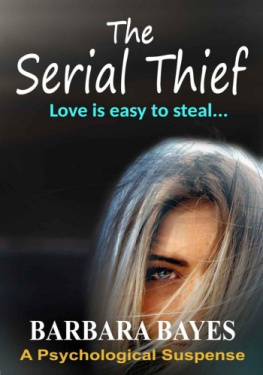
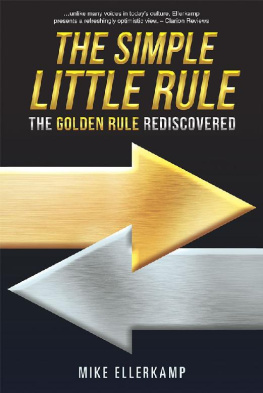
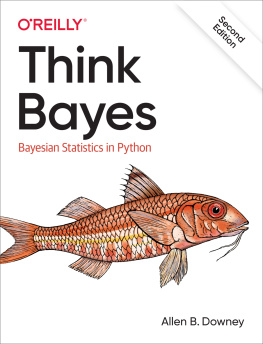
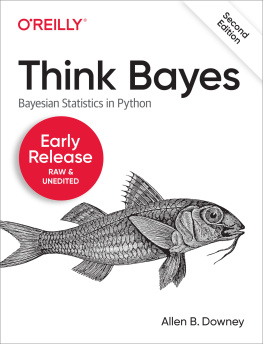
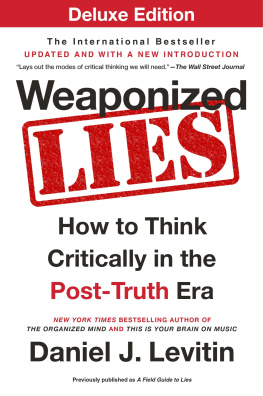
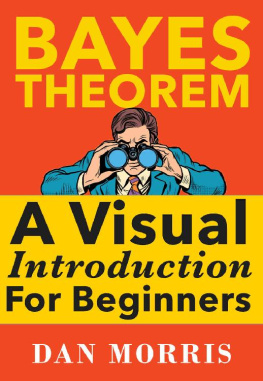
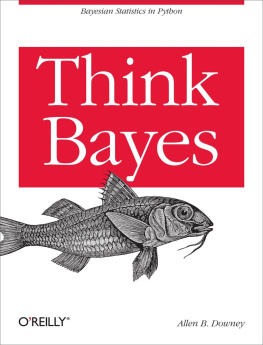
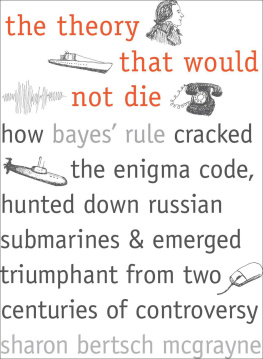







 Alan Jessop Let the Evidence Speak Using Bayesian Thinking in Law, Medicine, Ecology and Other Areas Let the Evidence Speak Alan Jessop Let the Evidence Speak Using Bayesian Thinking in Law, Medicine, Ecology and Other Areas Alan Jessop Durham University Business School Durham University Durham, United Kingdom ISBN 978-3-319-71391-5 ISBN 978-3-319-71392-2 (eBook) https://doi.org/10.1007/978-3-319-71392-2 Library of Congress Control Number: 2017960423 Springer International Publishing AG, part of Springer Nature 2018 This work is subject to copyright. All rights are reserved by the Publisher, whether the whole or part of the material is concerned, specifically the rights of translation, reprinting, reuse of illustrations, recitation, broadcasting, reproduction on microfilms or in any other physical way, and transmission or information storage and retrieval, electronic adaptation, computer software, or by similar or dissimilar methodology now known or hereafter developed. The use of general descriptive names, registered names, trademarks, service marks, etc. in this publication does not imply, even in the absence of a specific statement, that such names are exempt from the relevant protective laws and regulations and therefore free for general use. The publisher, the authors and the editors are safe to assume that the advice and information in this book are believed to be true and accurate at the date of publication. Neither the publisher nor the authors or the editors give a warranty, express or implied, with respect to the material contained herein or for any errors or omissions that may have been made.
Alan Jessop Let the Evidence Speak Using Bayesian Thinking in Law, Medicine, Ecology and Other Areas Let the Evidence Speak Alan Jessop Let the Evidence Speak Using Bayesian Thinking in Law, Medicine, Ecology and Other Areas Alan Jessop Durham University Business School Durham University Durham, United Kingdom ISBN 978-3-319-71391-5 ISBN 978-3-319-71392-2 (eBook) https://doi.org/10.1007/978-3-319-71392-2 Library of Congress Control Number: 2017960423 Springer International Publishing AG, part of Springer Nature 2018 This work is subject to copyright. All rights are reserved by the Publisher, whether the whole or part of the material is concerned, specifically the rights of translation, reprinting, reuse of illustrations, recitation, broadcasting, reproduction on microfilms or in any other physical way, and transmission or information storage and retrieval, electronic adaptation, computer software, or by similar or dissimilar methodology now known or hereafter developed. The use of general descriptive names, registered names, trademarks, service marks, etc. in this publication does not imply, even in the absence of a specific statement, that such names are exempt from the relevant protective laws and regulations and therefore free for general use. The publisher, the authors and the editors are safe to assume that the advice and information in this book are believed to be true and accurate at the date of publication. Neither the publisher nor the authors or the editors give a warranty, express or implied, with respect to the material contained herein or for any errors or omissions that may have been made. Chapter 1 Introduction Bayes is all the rage! Youll read this, or something like it, from time to time. This example is from the opening sentence of a book by Luc Bovens and Stephan Hartmann ]. In full the sentence reads Bayes is all the rage in philosophy.
Chapter 1 Introduction Bayes is all the rage! Youll read this, or something like it, from time to time. This example is from the opening sentence of a book by Luc Bovens and Stephan Hartmann ]. In full the sentence reads Bayes is all the rage in philosophy.